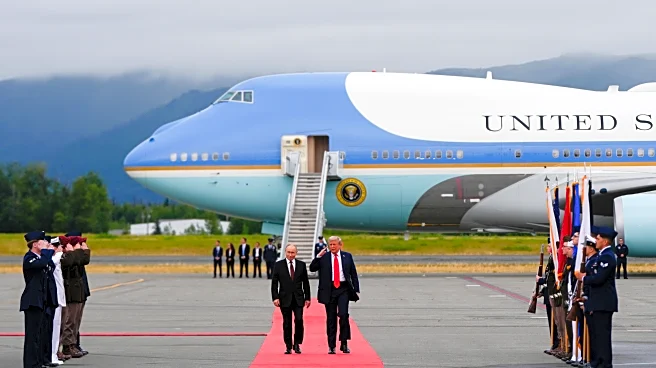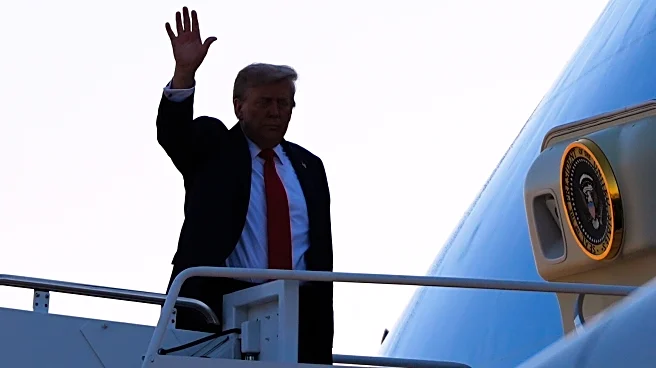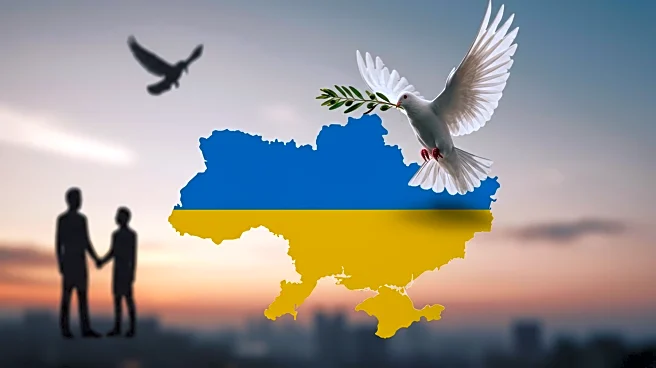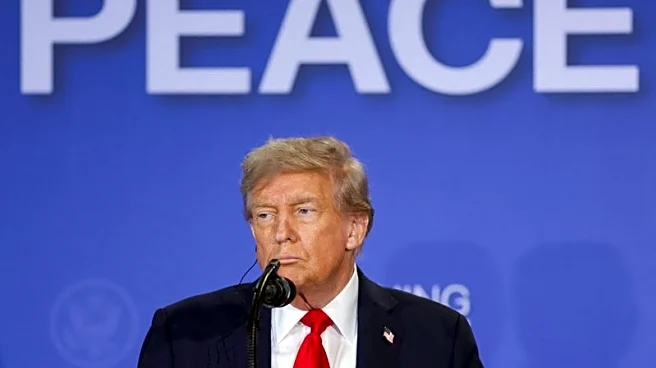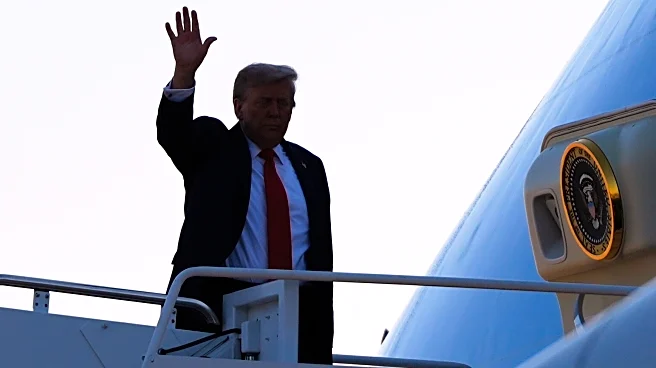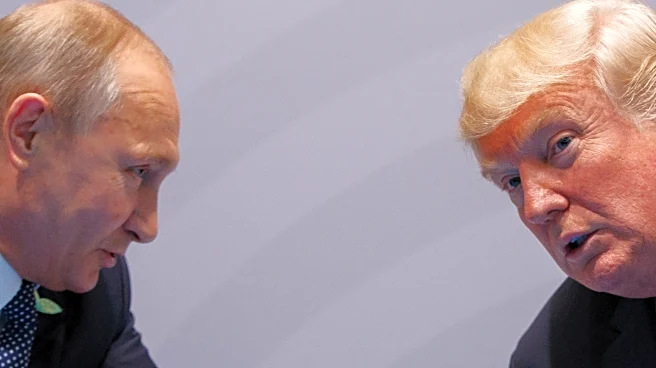What's Happening?
President Trump has proposed a full peace agreement to end the ongoing war between Russia and Ukraine, diverging from the approach favored by U.S. allies and Ukraine, which prioritize a ceasefire first. During a summit with Russian President Vladimir Putin in Alaska, Trump emphasized that a comprehensive peace agreement would be more effective than a ceasefire, which he argued often fails to hold. This stance aligns more closely with the Kremlin's position, which has been advocating for a full agreement. Ukrainian President Volodymyr Zelensky and European leaders have stressed the importance of a ceasefire as a prerequisite for peace talks. Trump plans to continue discussions with Zelensky at the White House, with hopes of arranging another call with Putin.
Why It's Important?
The proposal for a full peace agreement by President Trump marks a significant shift in U.S. policy and could impact international relations and the geopolitical landscape. If successful, it could lead to a resolution of the conflict, potentially saving millions of lives. However, it also risks alienating U.S. allies who support Ukraine's stance on requiring a ceasefire first. The move has drawn criticism from Democrats, who view Trump's engagement with Putin as undermining support for Ukraine. The outcome of these negotiations could influence U.S. foreign policy and its relationships with European nations and NATO.
What's Next?
Further discussions are scheduled as Ukrainian President Zelensky visits the White House, where Trump hopes to set up another call with Putin. European leaders are also meeting to discuss security guarantees for Ukraine and the continuation of pressure on Russia. The international community will be closely watching these developments, as they could lead to significant changes in the approach to resolving the conflict.


